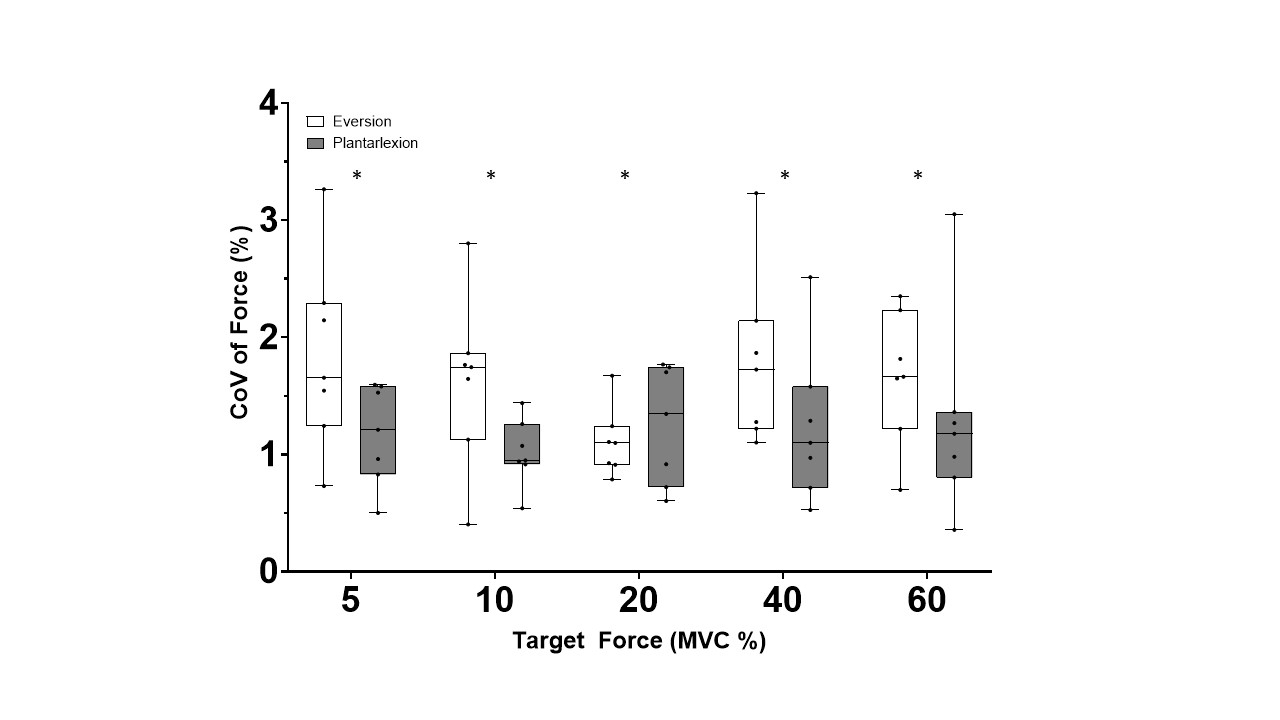Introduction: Peroneal muscles, main ankle evertors, are commonly affected and overstretched by sudden inversion of the ankle, the most frequent injury in sports, leading to impaired function and frailty. Their role includes mediolateral stability of the ankle and prevention of sudden and involuntary ankle inversion (Konradsen et al. 1998). However, they are considered as bifunctional muscles (abductors of the foot and plantar flexors of the ankle) (Pérot & Goubel, 1982) as the direction of their torque vector is not aligned with a single plane of action. By studying the discharge times of multiple concurrently active Motor Units (MUs) into these muscles, with high-density electromyography (HD-EMG) (Farina & Enoka, 2023), and by comparing estimates of the variance in the common modulation of MUs activity, a more detailed information for neural drive can be acquired during two tasks: abduction of the foot and plantar flexion of the ankle.
Aim/Objective:Thus, this study aims to compare neural drive variability of peroneal muscles during these two tasks.
Method:Seven active men participated in the experimental procedure. Prior to experiment, ultrasound recordings were acquired to ensure the proper array placement over the muscle belly for peroneus longus (PL) and peroneus brevis (PB). The experimental procedure comprised of trapezoidal isometric contractions of abduction of the foot and plantar flexion of the ankle at five target forces (5, 10, 20, 40 and 60% of MVC) with HD-EMG recordings using a 400-channel EMG amplifier (Quattrocento, OT-Bioelettronica, IT, 2048 Hz) from PL and PB. Force steadiness was quantified as Coefficient of Variation for force (CoV for force) and MUs discharge characteristics of PL and PB were analyzed as Mean Discharge Rate (MDR), Coefficient of Variation of InterSpike Interval (CoV ISI) and Standard Deviation of filtered Cumulative Spike Train (SD fCST). Linear mixed effects models were used to compare the two muscles (PL and PB), two tasks (abduction and plantarflexion) and five target forces (5, 10, 20, 40, and 60%). In all models, muscles, tasks, and force level were specified as fixed factors with participant as a random factor.
Results:The MVC force was significantly (p=0.004) greater during plantar flexion of the ankle compared to abduction of the foot. The CoV for force was greater during abduction of the foot compared to plantar flexion of the ankle (p=0.022). The MDR were similar between PL and PB and increased linearly with force. The CoV ISI was similar between muscles (p=0.895) and actions (p=0.257), but increased gradually with force (p=0.001). Additionally, the SD fCST was similar between the two muscles and actions (p=0.414).
Conclusions: Despite the differences on force output, the MU’s discharge characteristics of PL and PB were similar between the two tasks. The results might be attributed to the reduced variability of neural drive, due to improved capability of the motor unit pool to discharge action potentials during plantar flexion, as a result of daily activity. Collectively, these findings should be considered in order to design more efficient clinical interventions.
Figure 1: Indicates CoV force between to tasks for all target forces. (*=p<0.05)

